Let's highlight the shampoos that show good effectiveness against fleas in cats:

- What are the dangers of fleas
- How to know if a cat has fleas
- The most common signs of a flea infestation in a cat
- How a flea bite can be dangerous for a cat
- Where do cat fleas come from
- Popular Questions and Answers
- What are the dangers of fleas?
- How to check whether a flea remedy will cause allergy in a cat?
- What to do if the fleas in a cat do not go away?
- Do I need to treat the apartment where the cat lives?
- Can a pregnant or nursing cat be treated for fleas on its own?
- Means to repel fleas
- Treating the room
- How to check a cat for fleas
- Identifying symptoms.
- How to remove fleas from a cat, cat or kitten
- How to get rid of fleas from a pregnant or nursing cat
- Means to repel fleas
- Treating the room
- Know your enemy by sight: how a flea looks like
- How you can tell if a cat has fleas
- What flea remedies are available
- Flea drops.
- What to Buy
- Flea collars.
- What to buy
- Flea powder
- What to Buy
- Flea sprays
- What to consider when treating against fleas
What are the dangers of fleas
Fleas are blood-sucking insects that live on the surface of a pet's skin. They often appear in members of the feline family. They are adapted to a life of dwelling in thick fur, and the peculiarities of their body structure, and precisely the growths of chitin, allow them to move quickly. It is for this reason they are quite difficult to catch.
Interesting! Fleas have long hind legs, which allow the insects to jump distances that are hundreds of times greater than their body size.
The peculiarities of the insect's mouth ensure easy biting of the animal's skin, while a special substance is released together with the saliva, which impairs blood clotting and facilitates its suction.
It is not easy to remove fleas from a cat, this process requires patience and a lot of effort. The main thing is to do it in time, otherwise the parasites can have a negative impact on the condition of the pet.
The main unpleasant manifestation is considered an allergy to fleas in cats . In this condition, animals exhibit severe itching, irritation of the skin, which may eventually cause the development of dermatitis with an allergic nature.
If the cat has fleas, then you should be alert, because the bite of the parasites can cause a variety of diseases:
If you are wondering whether cat fleas are dangerous to humans, there is no definite answer to this question. Although the parasites attack mainly animals, but they can also bite people, although they do it reluctantly. They prefer to feed on the blood of only one host.
And whether fleas can be transmitted from cats to humans, we can say at once that no. These parasites cannot live on the human body, and if they do get on its surface, they quickly leave it.
How to know if a cat has fleas
To begin with, it is worth finding out where a domestic cat gets fleas. These parasitic organisms can appear even in animals that live permanently in the house and do not go outside. Causes of infestation may include the following:
- Communicating with animals that live outside;
- walking on contaminated ground, also parasites can pass from contaminated grass, plants;
- A pet can catch parasites through a person's outer clothing and shoes. Since it is easy to bring eggs and insects indoors on clothing from the street, be sure to shake off clothing well outside before entering the house.
Worth noting! Before you start eliminating insects, you need to know if the cat has fleas.
This requires considering the main symptoms of the presence of parasites. But to eliminate them, you can use special products with anti-flea effect.
- The manifestation of a feeling of itching on different parts of the body. During this, the animal may constantly scratch the body with its paws in different places, but mainly the back and sides;
- Beforehand, look at how fleas look like in cats, this will help to identify them faster in animals. When examining the coat of the pet, you will be able to see traces of eggs or parasite activity, which may resemble grains of salt or black pepper;
- Fleas in the pet provoke a feeling of intense itching, which causes scabies. This results in extensive wounds and scratches;
- A severe allergic reaction may appear under the pet's fur;
- detect the presence of parasitic insects in the pet can be detected during water procedures. Parasites when wet cannot move, and this will make it much easier to remove them;
- You can detect the presence of parasites by combing the hair of the animal with a comb.
The most common signs of a flea infestation in a cat
A colony of parasites does not immediately make itself known, and how to understand that a cat has fleas?
Owners should pay attention to changes in her behavior, in which:
- The pet begins to gnaw frequently and zealously into the fur;
- Unexplained nervousness in the cat is observed. The cat is very itchy and will announce this to its owner by its incessant meowing;
- On palpation and examination you can feel and see small brownish bumps, which are the products of insect excretion;
- During combing the fleas themselves – the culprits of the disturbance – are caught in the eye.
Veterinary practice distinguishes two stages of flea infestation, the first of which is quite quiet and does not bother the cat much. The cat is still playful and eating well, but visual inspection is inconclusive – several fleas are almost impossible to see because of their rapid movement and small size. Therefore, it is very difficult at the initial stage of infection to identify signs of flea activity in a cat, except for the only symptom – frequent scratching.
At the same time, the second stage is impossible to miss: due to the rapid growth of the flea colony, the symptoms become more pronounced:
- The pet turns into a sullen and battered creature;
- He becomes very weak and emaciated;
- Cheerfulness and playfulness disappear;
- Hair begins to roll in shreds and fall out;
- Attacks of vomiting may occur;
- The skin loses its immunity, which leads to the development of dermatitis.
Particular attention during examination of a cat with suspected fleas should be paid to the favorite areas of the body of these parasites – the abdomen, neck and the area near the jaw.
Usually, attentive owners do not bring the disease to its final stage and try as soon as possible to show the cat to a qualified specialist, who will accurately determine the severity of the infection and prescribe the correct effective treatment. Fighting on your own may not bring the desired result and may lead to the development of dangerous diseases, the carriers of which are fleas.
How a flea bite can be dangerous for a cat
Now it is very clear how to understand if a cat has fleas, but, most importantly, to prevent the progression of negative consequences from the bites of these parasites.
In addition to the fact that fleas contribute to the deterioration of the physical and psycho-emotional state of the pet, there is also irreparable damage due to the spread of dangerous infectious diseases by them:
As a warning, we can add that many diseases are transmitted to humans by fleas, indicating the need to follow the rules of care and preventive visits to the nearest veterinary line
At the same time, even knowing how to determine fleas in a cat, you should not forget about the danger of infecting small kittens. Every owner, and even more so the breeder of cats should remember about the damage caused by these parasites on their immature babies.
Not yet formed immunity is not able to resist infection, which may result in anemia, sudden weight loss and stopping the growth, which will undoubtedly affect the pedigree signs of the future cat.
Therefore, timely referral to a knowledgeable specialist will not only protect your pet from many troubles, but will also help protect the house from negligent inhabitants who can ruin the life of all its inhabitants.
Where do cat fleas come from
As it turns out, it's just a myth that a domestic cat that doesn't leave the apartment or walk with street cats can't get fleas. These parasites are quite capable of moving long distances on their own in search of prey, even feeding forays without using the animal. Therefore, it can be difficult for owners to detect whether a cat has fleas.

If your pet is suspected of having a flea infestation, the doctor may suggest a test with scotch tape or wet paper, when a large number of black "dots" – "flea feces" – are released from the coat, this is done when the fleas themselves are not visible on the body (they may run in, bite, but not live on the animal).
If the fleas are not a concern, then as a preventive measure, monthly drops are used on the withers. Note that they should be chosen according to the weight of your pet. Apply such preparations to the neck area by spreading the hair, squeezing the entire dropper, it is not allowed to bathe the pet for several days after treatment.
In case of severe flea infestation, flea atopic dermatitis, it is recommended not only to treat pets with local remedies, but also to treat apartments, beds, porches, basements.
There are permethrin-based products available for indoor treatment, such as: Cypermethrin, Parastop, you can also Neostomazan, Butox.
– Treatment of premises shall be performed without cats: treat and close the room for some hours. I recommend to read the instructions of all preparations attentively. Upholstered furniture can be treated with FLY spray. And you must vacuum more often. The beds better to replace with new ones, – recommends veterinarian Marina Mikheenko. veterinarian Marina Mikheenko.
Vaccinations. For cats, having access to the street, vaccination against fleas is a very effective way to prevent infection. Once a year, in spring or summer, it's enough to vaccinate your cat once a year, so you don't have to worry about the state of your cat's health for the whole year. Preventive vaccinations are done in veterinary clinics, but before that you should discuss the state of your cat's health with the doctor, check if the cat is pregnant, and clarify at what age vaccination of kittens is indicated.
Popular Questions and Answers
The most pressing questions that cat owners ask about fleas, we broke down with veterinarians.
What are the dangers of fleas?
– Fleas can not only cause allergic reactions, but also severe anemia in weakened and young animals with severe infestation. They also carry helminthic and infectious infestations, such as haemobartonellosis in cats," said veterinarian Marina Mikheenko.
How to check whether a flea remedy will cause allergy in a cat?
– If you decide to use the spray, first spray it on a small area of the coat and wait a few hours," advises veterinarian Lyubov Bogdan. – If the product does not cause an allergic reaction, you can use it.
But most often, allergies occur on collars, but it is difficult to check them. They are selected only by experience.
What to do if the fleas in a cat do not go away?
– It happens in rare cases, most likely the instructions on how to use the remedy against fleas were violated or the preparation was overdue, – says veterinarian Lyubov Bogdan. Lubov Bogdan, veterinarian, thinks. – But if you really don't get rid of fleas, you should combine treatment. For example, add pills to the collar, or combine the spray with injections. But it's better to ask your veterinarian to prescribe an appropriate treatment.
Do I need to treat the apartment where the cat lives?
– Yes, you do, because flea eggs may remain," explains veterinarian Lyubov Bogdan. veterinarian Lyubov Bogdan. – Thorough cleaning and disinfection of the room should be carried out at the same time as treating the cat with flea repellents. Before disinfecting, a general cleaning must be carried out: wash everything that can be washed at temperatures above 60 ° C, and then ironed. And the apartment itself should be treated with flea repellent.
Can a pregnant or nursing cat be treated for fleas on its own?
– Pregnant and nursing cats can be treated against fleas with sprays Frontline (the safest) and Stronghold, drops Bravecto and Brindline spot on (the latter only under the supervision of a veterinarian). But it is better to consult a doctor, – recommends veterinarian Marina Mikheenko.
Means to repel fleas
One of the most famous repellents that people use against mosquitoes, DETA, can also be used for cats, but the perfumes it contains and its short duration of action (up to 8 hours) make it extremely uncomfortable to use for protection against fleas. Fortunately, industry in recent years has begun to produce a sufficient number of flea repellents. Most of them contain essential oils from various plants as an active ingredient.
One of the most effective substances, which is also frequently used in industrial cat repellents, is citronella essential oil. It reliably eliminates cat bites and causes almost no allergic reactions. Included in a variety of veterinary medicines, but you can buy it separately, in essential oil stores. It is important to choose outlets with a good reputation, because in untested stores you can buy low-quality oil, which can cause allergies and be not very effective.
The use of veterinary drops on the withers and collars with essential oils is convenient because the effect of oils (any, not just citronella) in this case is longer, up to 30 days. The application of ordinary oil will protect the animal for 3-7 days, or until the first shower.
For urgent repellent treatment, the usual diethyltoluamide – known to all lovers of forests and dachas – is suitable. Be sure to note that this is the active ingredient in the repellent!
DETA is not convenient for constant treating; it needs to be applied regularly, every 8 hours, and it's undesirable for cats to lick it. But if you see your cat all flea-covered before you leave the cottage, it's a great option to avoid bringing the insects home.
Treating the room
Use the same groups of drugs that are used to treat animals. FOS and cyanopyretroids have proven themselves for treating premises. But first we apply mechanical cleaning with vacuum cleaner (paying special attention to cracks, upholstered furniture, backs of cabinet furniture), wet mopping and only then apply agents. You can use more than one product at a time, or you can use one at a time. Keep in mind: you will need both a liquid diluted in water to wash the floor so that the water with the product will flow into the cracks, and sprays. If the flooring is sensitive to excessive moisture, then a spray can be used to treat baseboards.
Getting rid of fleas is almost impossible. But getting rid of them before they form a nest in your apartment is quite easy. Ask your canine neighbors if they treat their pets against fleas. You can also treat the doorway with essential oils.
If you live on the first and last floors, you should use essential oils profilactically and periodically treat with any insect repellent the possible gateways for fleas – hoods, bathroom cabinets and other similar places in the apartment.
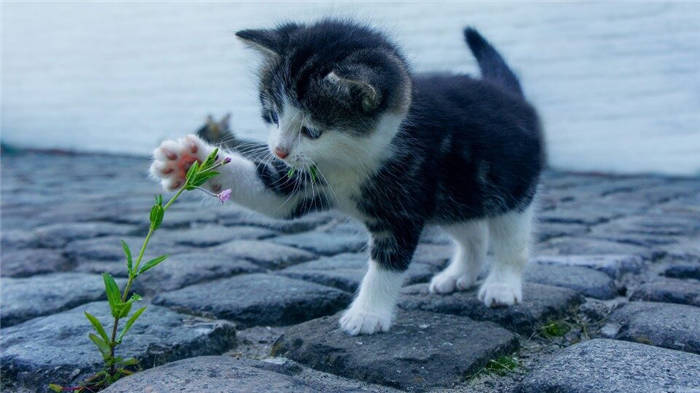
Due to the high volume of questions received, free veterinary consultations have been temporarily suspended.
How to check a cat for fleas
Contributor(s): Pippa Elliott, MRCVS. Dr. Elliott, BVMS, MRCVS is a veterinarian with over 30 years of experience in veterinary surgery and treating companion animals. She graduated from the University of Glasgow in 1987 with a degree in veterinary medicine and surgery. She has worked in the same animal clinic in her hometown for over 20 years.
Number of sources used in this article: 17. You will find a list of them at the bottom of the page.
Before you start looking for fleas in your cat, consider what gives you reason to suspect she has these blood-sucking insects. If you've seen fleas on your cat or in the house, it means that your cat does have the parasite and that he needs a flea treatment. Nevertheless, you may encounter this problem even if you do not find fleas on the animal or in the house. A cat is able to clean adult parasites from its fur, but it will still have eggs on it, from which new larvae will hatch a few weeks later. Be that as it may, one should be able to identify fleas in a cat.
Identifying symptoms.

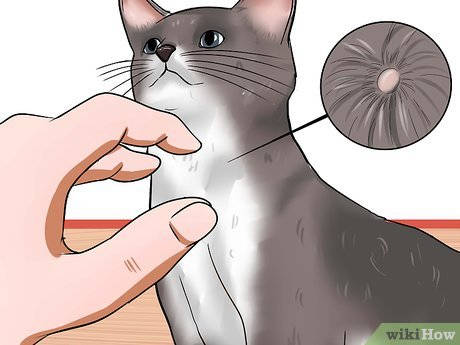
- Small bumps or crusted areas, usually on the neck and along the back;
- Irritated skin, especially on the back of the neck and at the base of the tail; [3] X
- The cat is frequently itchy, especially in the muzzle area;
- the animal frequently licks its hair;
- hair clumps due to frequent licking;
- hair loss;
- presence of tapeworms in the stool (fleas carry tapeworm eggs that are ingested by the cat) [4] X Source of information Patrick J. McKeever, Tim Nuttall and Richard G. Harvey, A Colour Handbook of Skin Diseases of the Dog, Second Edition, (London: Manson/Veterinary Press, 2009), 41.-42
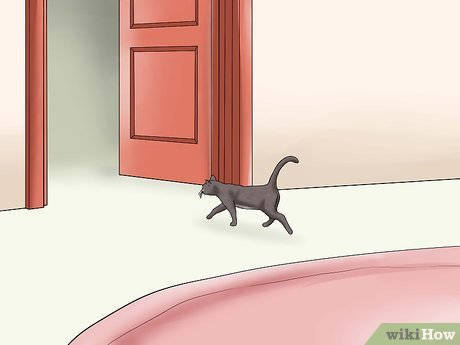
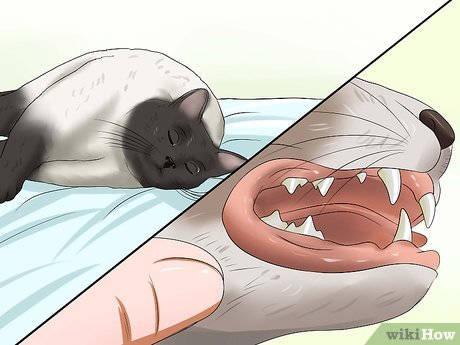
How to remove fleas from a cat, cat or kitten
Once the owner realized that his pet has fleas, he immediately faces the question of how to get rid of these parasites. This procedure consists of several stages:
- The choice of the drug. Not every flea remedy will be suitable for every pet. It is important to understand the degree of parasite infestation and limiting factors (age, health features of the pet). In some cases, it will be better if the owner takes the pet to a veterinarian rather than self-medicate. For example, when the cat is pregnant or if the animal has an intolerance to some components of the medication.
- Treating the pet with a flea treatment. It is important to strictly follow all instructions, observe the dosage, expiration date and expiration date of the drug.
- Treatment of the apartment. Since flea eggs and larvae often end up not on the pet itself, but on the floor, on its couch, in the carpet and other places, it is necessary to treat the room itself to prevent the risk of reinfestation of the parasites.
- Prevention. It is always necessary to take precautions and monitor the pet to prevent another flea attack on the kitten.
How to get rid of fleas from a pregnant or nursing cat
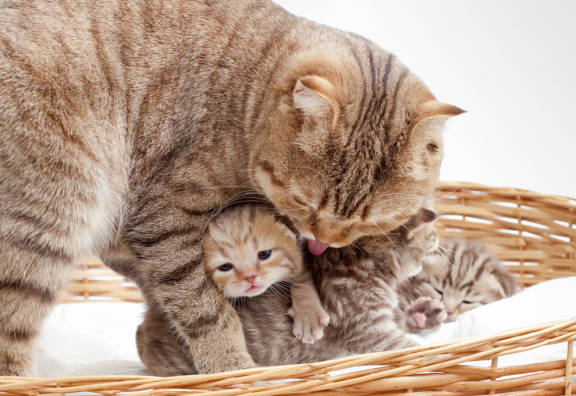
First, if the pet is infested, then the kitten will soon be found to have fleas, since the mother is constantly around her offspring.
Secondly, the body of a pregnant or nursing cat is weakened because it spends almost all of its resources on carrying or feeding the cubs. Because of this, the risk of contracting various infections in the presence of fleas increases several times.
The choice of treatments for pregnant or nursing pets must be made with special care and caution, because preparations can affect not only the female, but also her kittens. Some substances sometimes even lead to miscarriages. Therefore, it is best to first consult a veterinarian, who will advise the safest option in these circumstances.
Additional measures to help rid a pregnant or lactating cat of parasites:
- It is recommended to replace the cat's bedding, treat the space next to it, as well as its favorite places.
- As for the use of preparations, you have to make sure that the pet does not lick them and that they do not get inside. It is especially important to remember about this nuance when treating a lactating cat. Even if the cat itself cannot reach and, for example, lick the collar, the kittens, who are exploring the world, can easily cope with this, including trying it "for taste".
- A regular washing of the cat together with combing is also very effective. For this purpose you should choose a comb with frequent teeth. If during combing fleas get stuck between the teeth, they should be immediately rinsed off with hot water. The main difficulty of this procedure is that you can't get rid of all the parasites at once. Treatment of cats in this way should be carried out regularly. But the health of the cat and its offspring will not be jeopardized once again.
- Some owners use instead of drops and folk remedies to combat fleas. For example, decoction of rosemary, applied to the hair of the pet, destroys some of the parasites. Wormwood (fresh or dried) repels the insects well, although it does not kill them. It can be spread in the pet's favorite places, as well as apply decoction of this plant on the fur and even bathe the pet in it. However, you must remember that the effectiveness of folk remedies is not proven, so do not expect guaranteed results from this method.
Means to repel fleas
One of the best-known repellents that people use against mosquitoes, DETA, can also be used for cats, but its constituent fragrances and short duration of action (up to 8 hours) make it extremely inconvenient to use for protection against fleas. Fortunately, the industry has begun to produce plenty of flea repellents in recent years. Most of them contain essential oils of various plants as an active ingredient.
One of the most effective substances, which is also frequently used in commercial cat repellents, is citronella essential oil. It reliably relieves cats from insect bites and causes almost no allergic reactions. It is included in various veterinary medicines, but you can also buy it separately, in essential oil stores. It is important to choose outlets with a good reputation, as unproven stores can buy low-quality oil that can cause allergies and be not very effective.
The use of veterinary drops on the withers and collars with essential oils is convenient because the effect of oils (any, not just citronella) in this case is longer, up to 30 days. The application of an ordinary oil will protect the animal for 3-7 days, or until the first shower.
For emergency repellent treatment you can use ordinary diethyltoluamide known to all the lovers of woods and cottages DETA. Be sure to note that this is the active ingredient in the repellent!
DETA is inconvenient for permanent treatment, it requires regular application once in 8 hours, and it is undesirable for a cat to lick it. But if you see your cat all flea-covered before you leave the cottage, it's a great option to avoid bringing the insects home.
Treating the room
Use the same groups of drugs that are used to treat animals. FOS and cyanopyretroids have proven themselves for treating premises. But first they apply mechanical cleaning with vacuum cleaner (paying special attention to cracks, upholstered furniture, backs of cabinet furniture), wet mopping and only then apply agents. You can use more than one product at a time, or you can use one at a time. Keep in mind: you will need both the liquid to dilute in water, to wash the floor so that the water with the product flowed into the cracks, and sprays. If the flooring is sensitive to excessive moisture, then a spray can be used to treat baseboards.
Getting rid of fleas is almost impossible. But getting rid of them until there is a nest in your apartment is quite easy. Ask your canine neighbors if they treat their pets for fleas. You can also treat the doorway with essential oils.
If you live on the first and last floors, you should use essential oils profilactically and periodically treat with any insect repellent possible gateways for fleas – hoods, bathroom cabinets and other similar places in the apartment.
Know your enemy by sight: how a flea looks like
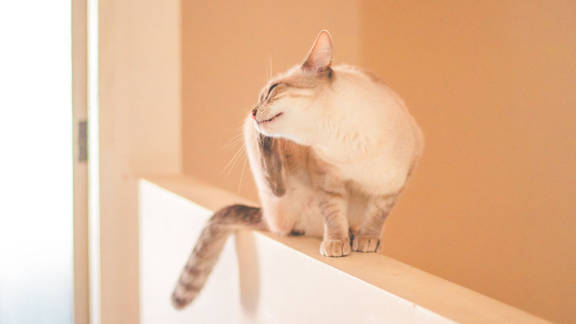
The most common type of flea that defeats furries is the cat flea, Ctenocephalides felis. The female flea with eggs can reach a length of up to an inch and a half, but usually fleas are very small insects (2-3 mm) of dark color with flattened sides. This body shape allows them to be little vulnerable: a flea is virtually impossible to crush with the fingertips, but only by squeezing between the nail plates. Because of this cunning form that relieves fleas of the fear of being caught, nature has not provided a "disguise" for their bites: they have no anesthetic secretion like other parasites, and fleas bite very painfully indeed. When they bite, they feed – they suck blood.
How you can tell if a cat has fleas
If cat fleas have just appeared, they may not be visible to the naked eye, sitting deep in the undercoat. The first warning signs of fleas: the cat begins to scratch frequently and sharply, gnaw into the skin, scratch wounds appear on the body. If the animal is behaving restlessly, it is worth to follow it closely, and if the behavior peculiarities do not cease – go to the search for the pest.
Put the cat on a clean sheet of paper and brush it. If she has fleas, small black-brown crumbs will fall onto the paper – this is flea feces. To make sure it's really parasite feces, drop water on the crumbs – it will turn brown-red in color.
Finally, you can look for fleas right on your cat's body. You can do this by taking a fine-toothed comb and sliding it through the hair in several places. If you don't see the flea itself, you may find the same excrement, which looks like black dust on the skin. And, of course, there is always a reliable option – go to the veterinarian, he will immediately advise the most appropriate treatment.
At the first alarming symptoms, we advise not to delay diagnosis. Flea bites can be very disturbing for a cat and can not only harm its physical condition (constant scratching until blood and wounds), but literally drive it crazy and lead to neurosis. In addition, cat fleas are not squeamish about humans: they can settle on their bodies and bite them. If you have already found parasites on the body of a very small kitten, be especially careful: not all anti-flea products are suitable for fluffy babies, in this article we tell you in detail how to get rid of fleas in a kitten.
What flea remedies are available
Flea drops.
This option is probably one of the most popular. Flea drops from different brands differ in the duration of action, so that treatment will be needed at different intervals. In addition, there are variations in composition. Such means are made on the basis of natural components or synthesized substances.
Note that drops for dogs are not suitable here. Their composition may contain permethrin, which is deadly for cats.
What to Buy
Flea collars.
This is essentially a plastic strap treated with special insecticidal agents. In addition to fleas, these collars can also protect against other parasites. Detailed information about the spectrum of effectiveness is usually found in the instructions. The duration of action is from one to several months, depending on the manufacturer.
Such a strap is a good option if you have one pet. If you have more than one cat in the house, however, they may chew each other's collars, so the risk of poisoning is quite high. Active animals that take long walks are also at risk, as they might get caught in the strap and hang onto it. So if you want to use this method, choose a collar with a tear line, which will keep your pet out of trouble.
A more expensive and advanced option is ultrasonic flea collars. They are safe for humans and animals, but suppress the bloodsuckers. Such devices work with miniature batteries.
What to buy
Flea powder
Powder (powder) is effective only against adult fleas. It is applied to the skin and coat of animals and then combed out afterwards.
What to Buy
Flea sprays
To destroy the parasites, you need synthetic sprays with special insecticides in the composition. Like drops, flea sprays are better to take specifically for cats . Such products for dogs may contain permethrin, which is dangerous for cats, so carefully study the composition.
What to consider when treating against fleas
In order not to harm your pet, you need to follow a few simple guidelines:
- Use only products designed for cats.
- Apply only one product of a certain type at a time, do not combine different types of drops or other medications.
- Choose options that are appropriate for the pet's age and weight.
- Strictly follow the instructions that come with the medication. Do not violate the dosage.
- Treat sprays only outdoors.
- Observe safety precautions and wash your hands after treatment procedures.






